 |
||
|
||
| ||
VideoIt is pleasant to note that both leaders of the videocard market - NVIDIA and ATi - have successfully enough finished the past financial year that has become hard for the majority of the hi-tech companies, and even fatal for some. By results of the year, NVIDIA's shares have become the "prize-winner" of Wall Street auctions and have also won the place in Standard and Poor's 500 rating, having started the year with at the price of $16.50 and having finished it at the price of $68 per share. Besides the doubtless leadership in the market of PC graphic solutions, NVIDIA has also earned much selling the chipset for Microsoft Xbox. ATi, though lagging behind the leader, has also informed that company incomes and profitability in the first financial quarter of 2002 that finished on November, 30, 2001, have considerably increased in comparison with the previous quarter. Besides the successful start of sales of new generation graphic chips in the second half-year of 2001, the company has received the significant growth of incomes, having started to sell Nintendo GameCube in Japan and USA, equipped with ATi Flipper chip. So, both leaders feel confident and strong, and are going to compete further, that is always good for end users. In the field of PC graphic solutions it was the second "off-season" month: it was still far to the release or even the announcement of new chips from the leaders - NV17 and NV25 from NVIDIA, or RV250 and R300 from ATi; ST Micro and Matrox have been keeping silence recently. What do manufacturers have to do? Just surprise buyers with wonders based on already released chips. Now the "hardcore" tweakers can order a unique e-GeForce3 TI 200 card from eVGA through the Web, featuring 64 MBytes of high-speed 3.3 ns DDR SDRAM memory. It theoretically allows to boost memory working clock rate up to 600 MHz. Another unique board - from Taiwanese Triplex: Millennium Silver GF-TI card with 64 MBytes of DDR SDRAM memory with silver covering of the board and conductors.  According to company representatives, it's not just an advertising trick, but a thought-out engineering step to increase the stability and prolongate the terms of work. Precisely the same "silver" board variant, based on NVIDIA GeForce2 MX400 chip, is expected as well. Another extreme: Gainward company has announced the release of GeForce3 PowerPack!!! Ti/500 JUMBO Golden Sample card that is expected to appear for sale in January, 2002. The card is based on the NVIDIA GeForce3 Ti200 graphic chip and has 128 MBytes of 4 ns DDR SDRAM memory, composite and S-video outputs. According to the company, the card is capable of exceeding NVIDIA's reference board parameters approximately by 25% in the Enhanced Mode that has been achieved due to the improved board design, faster memory and more effective cooling. In December NVIDIA has received the USA patent #6.323.860 "Circuits and methods of delaying rendering conditions linkage with graphic system primitives". At last, right at the end of the year, ATi has officially announced the mass deliveries of All-in-Wonder Radeon 8500DV multipurpose multimedia graphic board; cards have been noticed in retail shortly after that. 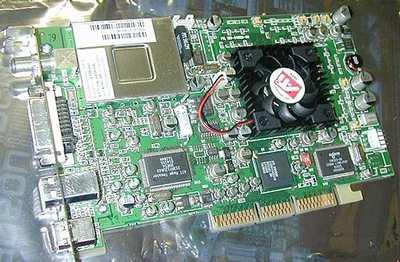 The price of 8500DV recommended by the manufacturer has been reduced by $100 in comparison with that announced in August and made $399. As it was found out, the real card samples were equipped with 64 MBytes of memory working at 190 MHz, and the graphic chip was working at 230 MHz, that was even lower than the working clock rate of 8500LE chip. However, I doubt that they selected slower chips for such a complex device. Most likely, the chip's clock rates were artificially lowered for the sake of the entire system's stability. Probably, Radeon AIW 8500DV will at last be available for masses after the New Year, as there are many customers wishing to get such a multipurpose device. Let's hope that the novelty's price will also reduce in the due course. Unlike NVIDIA-based cards, that manufacturers try to launch at higher clock rates, nobody could raise it higher than 275 MHz of Radeon 8500 from ATi itself. Moreover, alongside with 250 MHz Radeon 8500LE cards from ATi's partners, there were even Radeon 8500LELE versions from Hynix actually still equipped with 3.6 ns memory. 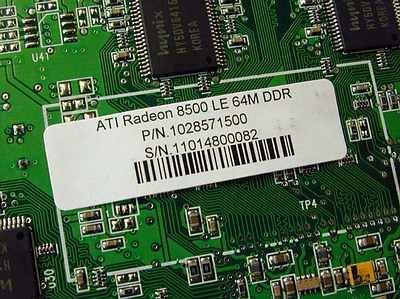 The interfaces set of the new LELE is similar to the senior models. Actually, the card is delivered without DVI -> D-Sub adapter. Versions with lower clock rates inspire an idea that ATi's yield of substandard chips, that are further sorted and divided into several streams, is still great. Except for numerous, but still alike as two peas versions, based on Radeon 7500 and Radeon 8500LE chips, low-profile cards on Radeon 7500 chips have appeared for sale in December: RV200A1D from Jetway and almost the same Radeon 7500 version from AOpen.  RV200A1D is a usual Radeon 7500 variant with 64 MBytes of DDR memory, DVI and TV outs, but with some textolite economy.  AOpen Radeon 7500 is equipped with 64 MBytes of VRAM (DDR SGRAM, 250 MHz) memory from Samsung, composite, TV and standard VGA outs. Closer by the end of year there was data that ATi was going to release another light version of Radeon 7500 videocards. Now the market expects Radeon 7500LE with 250 MHz clock rate (as against 275 MHz of complete Radeon 7500) and 64 MBytes of 5 ns SDRAM memory (instead of DDR SDRAM), working at 175 MHz. The output set is standard: analog, DVI and S-Video. Most likely, the intermediate solution between Radeon 7500 and Radeon 7200 appeared due to the screening of Radeon 7500 chips that do not work at regular clock rates. The situation when there are only two competitors on the market of graphic cards gets clearer. In December we've heard nothing from ST Micro and its Kyro III development, and Matrox brought sad news at all. The company has decided not to take part in the CeBIT 2002 exhibition in spring. The main reason was the generally difficult economic situation and the absence of the marketing response from actions among focus groups at which the company aims its production. But we guess, that most likely, Matrox just has nothing to show at the exhibition: there are no even rumors about Matrox's new graphic chip codenamed Parhelia, and all other cards of this company have been being sold for a long time already. MonitorsDecember was rich with demarches of analysts and manufacturers of the monitor manufacture sector. There were many announcements of new interesting models and many interesting figures about this industry development and forecasts for the near future. Up to the end of the year Samsung and LG.Philips LCD have decided to raise prices for TFT LCD panels by average $10 - $15. Closer to the middle of the month Taiwan sounded the same. Chunghwa Picture Tubes (CPT), AU Optronics (AUO) and some other Taiwanese companies have agreed to raise cost prices of 15" TFT LCD panels by $10 in January (present cost prices for this production are approximately about $225), and have also warned that the next increase - up to $250 - will, probably, take place in March. It seems that manufacturers bear such courageous forecasts of prices increase hoping for the stable growth of demand and market revival. However, analysts have begun warning about probable prices increase for TFT LCD products by the end of 2001 due to increased demand since the end of spring. Some fresh data appeared at the end of the year. Here's, for example, what DisplaySearch reported:
Almost all fresh monitor announcements are about LCD and plasma. NM Visual (NEC Mitsubishi Visual Systems) started sales of 15" RDT154A TFT LCD display in December. 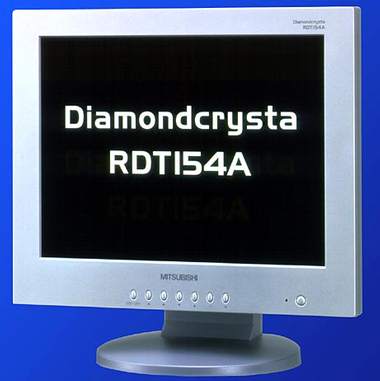 Monitor's maximum resolution is 1024 x 768, pixel size is 0.297 mm, viewing angle - 160 degrees horizontally and 150 degrees vertically, maximum brightness - 300 candles/sq.m, contrast - 350:1. RDT154A is equipped with digital DVI-I input and is sold for about $500. In December LG Electronics presented five new TFT LCD monitors at once.  15" LG 568LM XGA (1024 x 768) monitor with 95 degree vertical viewing angle and 130 - horizontal, maximum screen brightness - 200 candles/sq.m, contrast - 250:1, equipped with built-in 2 x 1 W dynamics and analog VGA input.  17" LG 782LE SXGA model has 140-degree vertical viewing angle and 150-degree - horizontal, maximum brightness - 250 candles/sq.m, contrast - 400:1, equipped with DVI-I and D-Sub 15 interfaces and a USB port.  18.1" LG L1800P display can be positioned both vertically, and horizontally. It features 1280 x 1024 (SXGA) resolution, 160 degree viewing angle, maximum brightness - 250 candles/sq.m, contrast - 300:1. LG L1800P is equipped with DVI-I and D-Sub 15 interfaces, a USB port. It will be released in black and white case variants. 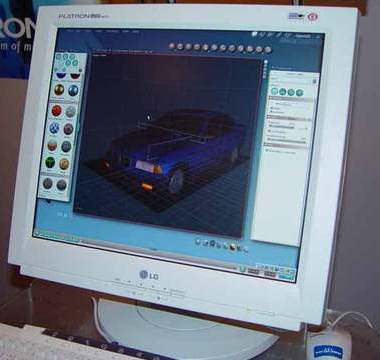 Another 18.1" model - LG 882LE is alike LG L1800P, but is a bit bigger and heavier, and has smaller maximum screen brightness - 200 candles/sq.m. Actually its price should be also moderate. 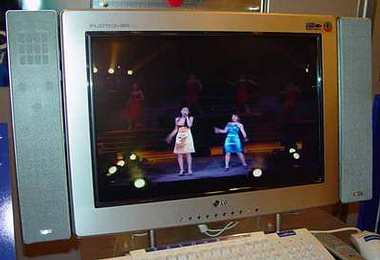 The fifth model is a huge 22" LG 295LM monitor with 140-degree viewing angle in both planes. Maximum brightness - 180 candles/sq. m, contrast - 300:1, maximum resolution is 1600 x 1200 for analog input and 1280 x 1024 for digital input. The monitor is equipped with stereophonic dynamics, DVI-D, VGA, and S-VHS inputs. IIYAMA started to sell its 17" AS4314UT LCD monitor with 1280 x 1024 maximum resolution and 0.264 mm pixel size.  Maximum screen brightness of IIYAMA AS4314UT - 250 candles/sq.m, contrast - 400:1, viewing angle - 130 degrees vertically and 150 degrees horizontally, Horizontal scanning frequency - 24-80 kHz, vertical - 56-75 Hz, response time - 40 ms. The monitor is equipped only with the analog input. AS4314UT has rather modest characteristics and very moderate price for a 17" TFT LCD monitor - about $550. Japanese Eiso Nanao presented 18.1" FlexScan L685 in December.  FlexScan L685's maximum resolution is 1280 x 1024, maximum brightness - 250 candles/sq.m, contrast 400:1. Both vertical and horizontal maximum viewing angle - 170 degrees, response time - 40 ms. It features 14-gradation color temperature adjustment (4000K up to 10000K with 500K step), one analog and two DVI inputs, 4-port USB concentrator. Another 18.1" TFT LCD novelty is Sharp's LL-T1820 monitor - according to Sharp experts, it's the first model with 10-bit color per each RGB channel on the market (as against standard 8-bit depth). 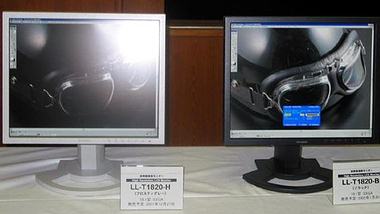 There will be two versions: LL-T1820-H and LL-T1820-B, distinguished by case color. Maximum resolution of LL-T1820 is 1280 x 1024, pixel size is 0.2805 mm, maximum brightness - 220 candles/sq.m, contrast - 400:1, viewing angle - 170 degrees, response time - 25 ms. The monitor can be rotated on its support for up to 90 degrees; it's is equipped with one analog and two DVI-I inputs and a USB concentrator. A bit more about plasma. Eizo Nanao announced 42" FlexScan P4262 model.  FlexScan P4262 W-VGA monitor features 160-degree viewing angle, has up to 350 candles/sq.m maximum screen brightness, contrast - 700:1. The model is equipped with analog VGA, digital and S-Video inputs and is supplied with the special iSound P1-42 audio module. NEC has announced two new plasma displays at once: 42" PX-42VM3 model (on the left photo) and 50" PX-50XM2.  Both models have contrast increased up to 100:1. Maximum brightness of PX-42VM3 is 400 candles/sq.m, maximum resolution - up to 1600 x 1200 (UXGA), pixel size at 852 x 480 resolutions is 1.08 mm. PX-50XM2 has maximum resolution of up to 1365 x 768 (with pixel size of 0.81 mm). Both monitors are equipped with analog RGB and digital DVI inputs. An interesting capability of novelties is their digital zoom of image fragments up to 900%. PDAs, notebooks, Web-tabletsIn December there were not much technological news on the portable PC market. First of all, British ARM has announced the new 1.2 version of its ARM Developer Suite. Now updated suite supports Jazelle technology that is to provide Java hardware acceleration. Besides, ARM Development Suite 1.2 now supports Red Hat Linux, ARM VFP9-S and ARM VFP10 FPU coprocessors. Another serious event of the month was the rather unexpected message from Palm about transition to Texas Instruments's OMAP platform. It was unexpected enough that Palm has chosen Texas Instruments as the supplier of the new OMAP platform. During the tender OMAP competed with Intel's XScale and Motorola's DragonBall platforms. Palm plans to use OMAP architecture that consists of ARM processor core and TI's C5xxx serie DSP processor with integrated GSM controller, in the next generation of its PDAs. Palm is going to cooperate with Texas Instruments not only as the contract chip supplier but also as a joint developer of a new wireless platform, down to unification of research and technological resources. Provisional terms of the new 5th Palm OS version release were also announced: it's expected already in the second half-year. Only O2 company announced the release of the new PDA model in December: its Pocket PC 2002 XDA smartphone is a pocket PC with a built-in DGSM900/GSM1800/GPRS Class B phone. 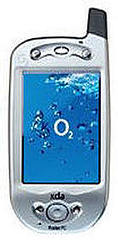 XGA is equipped with 206 MHz Intel StrongARM processor, 32 MBytes ROM, 32 MBytes RAM, SD/MMC flash card slot; display is the reflecting TFT touch screen featuring 240 x 320 resolution and 4096 colors. All PDA were announced, and sales are at their peak. Now it's about pocket PC accessory vendors - from special jackets with every possible PDA-compatible pockets up to serious modules like, for example, Option's GSM/GPRS module for Compaq iPAQ.  The new module, developed together with Compaq, has received PTCRB, UL, FCC and FCC (Canada) certificates for Northern America, R&TTE and CE - for Europe. One more very interesting device for Compaq iPAQ - DENALIAN-V TV and FM module from Korean Denali, providing telecasts at 320 x 240 resolution (30 frames per second) in 24-bit color (now only in NTSC standard), and also FM radio stations receiving in 87.5-108 MHz range.  There's still no data about module's price and terms of retail launch, as well as about PAL/SECAM version. Hewlett-Packard started to release these mini-keyboards for its HP Jornada 568. 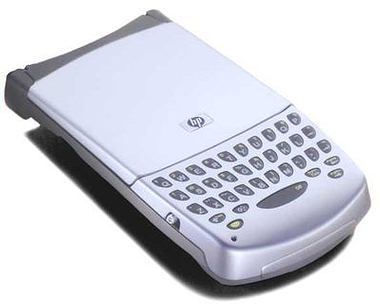 They will appear for sale at the end of February. It is possible to mark the healthy competition between the certain segment of notebooks and pocket PCs. If PDA was positioned as some advanced electronic notebook earlier, then now such PCs more confidently take over the vital space, especially with specific accessory sets. Speaking about interesting December novelties of the notebook market, I'd like to mark high-end Dell Inspiron 8100 serie models with Mobility Radeon-based graphic subsystem and 64 MBytes of DDR video memory.  Portable Inspiron 8100 PCs feature 1.0 GHz Mobile Pentium III-M processors and 815EP chipset. One of the notebook versions (for about $2000) is equipped with 128 MBytes of RAM, 20 GBytes UltraATA/100 HDD, 15" TFT LCD UXGA screen, CD-RW drive; has Windows XP Home Edition preinstalled. The more advanced variant (about $2700) is equipped with 512 MBytes of memory, 48 GBytes HDD and DVD-ROM/CD-RW combo drive; it has Windows XP Pro preinstalled. ASUS has presented the new version of the popular S1300A notebook.  S1300A will appear in several variants at once: 1.3 GHz (and higher) Intel Pentium III-M processors (512 KBytes of L2 cache) or 1 GHz (and higher) Cerelon processors (256 KBytes of L2 cache) on Intel Almodor-M (i830M) chipset with integrated graphics, 128 MBytes of PC133 memory (up to 384 MBytes), 13.3" active TFT matrix display (1024 x 768, XGA), 2.5" ATA-100 10/20/30 GBytes HDD, integrated LAN controller (10/100 Mbps RealTeK Fast Ethernet), and V.90/K56flex modem. Notebooks based on VIA C3 processors have also begun to appear. A900 model on 667 MHz VIA C3 was presented by Access Micro: 14.1" XGA TFT LCD display (1024x768), 10 GBytes HDD, 128 MBytes SDRAM, 24x CD-ROM, 10/100 Ethernet (Realtek 8100), 56K modem, TV out for business presentations, integrated AC'97 codec, SPDIF interface, Windows XP Home Edition.  The main advantage of this model is, certainly, the price: it is announced to be about $800. Similar models with up to 1 GHz processors are expected in the near future. Apple has acted as well In December, having released two notebooks of PowerBook G4 Titanium line with DVD-ROM/CD-RW drives. 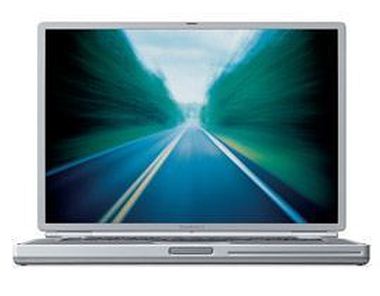 Models feature 256 MBytes of SDRAM memory (up to 512 MBytes), 20 GBytes HDD (Ultra ATA/66, up to 30 GBytes), 550 MHz or 667 MHz G4 processors, DVD-ROM/CD-RW drives with 8/8/8/32 speed formula. The model with 550 MHz processor will cost approximately $2300, 667 MHz model - $3000. There was little or no Web-tablet news in December. The only news - sales of the first consignments of AquaPAD from Taiwanese FIC right at the end of the month, and Air Board IDT-LF2 from Sony.  FIC AquaPAD tablet is equipped with 500 MHz Transmeta Crusoe TM5400 processor with integrated north bridge (south bridge is discrete, ALi M1535), 128 MBytes or 256 MBytes of SO-DIMM SDRAM memory, 8.4" color TFT-LCD touch screen (800 x 600), Compact Flash slots (32/64/128/256 MBytes, up to 1 GBytes MicroDrive HDDs are supported), two USB ports. AquaPAD is already sold in USA. The version with 128 MBytes of memory and Midori Linux or Windows CE OS will cost $660, 256 MBytes variant with any of these OS costs $700. Sony's Air Board IDT-LF2 - combined Internet-tablet/TV set features a touch screen, base and dock stations, that allow to receive telecasts, surf Internet, work with E-Mail, etc. It communicates with the base station through IEEE802.11b wireless protocol or USB interface.  IDT-LF2 screen size - 12.1", resolution - 800 x 600, TV tuner works with 1-62 channels (NTSC system). The base station is equipped with two video inputs, audio input and output, Ethernet (10BASE-T) and USB sockets, Memory Stick slot. The provisional price of the novelty is about $1000. Digital photoOne of "stillest" months in terms of digital camera releases. If there were any devices announced, but nothing worthy our attention from the technological angle. German Leica Camera, for example, has presented 2.1-megapixel DC 2111 cameras from its partner - Minox.  There's absolutely nothing new - the camera was released to replace of Minox DC 1311 model and is a typical representative of basic digital cameras "for beginners" with the fixed focal length (F2.8), 2.1-megapixel 1/2.7" CCD matrix, optical viewfinder, LCD display and USB interface. Matsushita Electric announced the release of SV-AV10 multipurpose camera, sized as a cellular telephone, under Panasonic trademark. 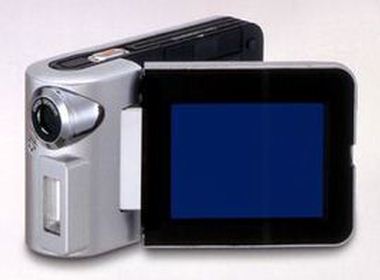 SV-AV10 is equipped with 1/4" CMOS sensor (350000 pixels, effective - 330000), 4.16 mm focal distance lens, F=3.6 (minimal shooting distance - 50 cm), 2" LCD display (110000 pixels), built-in microphone; it supports SD/MMC flash cards and is capable of recording and playing AAC audio files. Formats: image - 640 x 480 (DPOF, JPEG), video - 176 x 144 / 320 x 240 (four modes - fine/normal/economy 1/economy 2, MPEG-4 standard), sound - G.726. Fuji Film has announced the release of 2.2-megapixel BIGJOB DS-270HD waterproof camera encased in the special water and dust proof rubber case of JIS class 7 protection level.  DS-270HD is equipped with 1/1.7" Super CCD sensor with cellular elements layout, effective pixels - 2.2 million that allows to shoot pictures at the following resolutions: 2400 x 1800 (interpolated), 1600 x 1200, 1280 x 960, 640 x 480 pixels. The relative sensitivity - ISO200. Device optics has fixed focal length (28 mm in 35 mm equivalent), 1.5x digital zoom. DS-270HD will appear for sale at the end of February, 2002. Multimedia and peripheralsPity, but December multimedia section consists of only a couple of MP3 player announcements. December was not a season of announcements, but a season of sales... AIWA has presented its first MP3 player for 8 cm discs: XP-Z3C.  The new MP3 discman is equipped with 40-second antishock protection for CD-Audio and with 100-second for MP3. The player works with MP3 files recorded to 8 cm CD-R, CD-RW mediums. XP-Z3C sizes: 90 x 28 x 104 mm, weight - just 145 gr. Japanese Seagrand has announced the release of RAVEMETAL digital MP3/WMA player, very similar to Hyun Won M-Any DAH-200M player that received the "Product of the year" award from our site in the "digital players" nomination in 2001.  Seagrand RAVEMETAL players support MP3, WMA, and ADP formats, allow to play music through headphones or with the help of a usual cassette player. RAVEMETAL is released in three variants: with 64 MBytes, 128 MBytes, or 256 MBytes of the built-in memory. All versions are equipped with MultiMedia (MMC) slot for additional flash memory. Perhaps, the publication of the complete official specification of On-The-Go (OTG) standard version 1.0, being henceforth the addition to USB 2.0, on the USB-IF site was the most serious December event. Products with On-The-Go support should appear already in the beginning of 2002. Nokia, Ericsson, TransDimension, Qualcomm, HP, Kodak, Imation, Palm, NEC, Intel and Microsoft are going to promote the new standard in their products; but Sony has refused to support it. In December Olympus has released 3D Scantop device that allows to make three-dimensional models to create, for example, 3D presentations with their subsequent publication in the Internet. 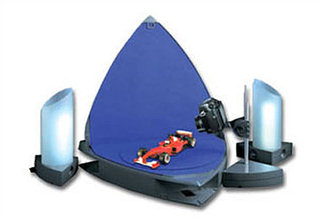 The system consists of the digital camera, the stand, the rotating projectors and special software. This complex creates real three-dimensional models, not just simple frame sets. The maximum size of a model that can be created with 3D Scantop is up to 250 mm in height and up to 200 mm in diameter. The company asserts, that the system is very simple in use - one just has to calibrate it, set chromaticity and resolution - and 3D Scantop will be ready to work. The system will itself shoot enough images, remove background, create a three-dimensional picture-based model, and texture it. There is an interesting tiny mobile SV-P10 USB thermoprinter expected under Panasonic trademark, capable of printing directly from SD and MMC flash cards. 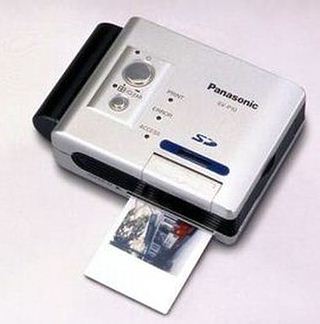 The size of this tiny printer is 85 x 68 x 30 mm,
weight - 185 gr. It can print pictures up to 69 x 38 mm in size
at 203 x 203 dpi resolution just for 70 seconds.
Write a comment below. No registration needed!
|
Platform · Video · Multimedia · Mobile · Other || About us & Privacy policy · Twitter · Facebook Copyright © Byrds Research & Publishing, Ltd., 1997–2011. All rights reserved. |